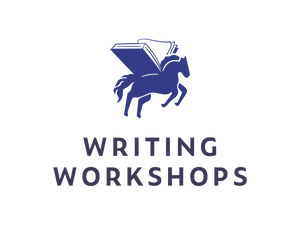by Writing Workshops Staff
3 years ago
“The essay becomes an exercise in the meaning and value of watching a writer conquer their own sense of threat to deliver themself of their wisdom.” ― Vivian Gornick, The Situation and the Story: The Art of Personal Narrative
We offer a lot of classes that will help you write Creative Nonfiction. But what makes creative nonfiction different from other types of essays? In creative nonfiction, personal details and anecdotes are used to make the story more relatable and interesting for the reader. Creators often use this style to share their personal thoughts, experiences, or beliefs in a way that can’t be achieved through fiction alone. With a little practice and the right tools, virtually anyone can write creative nonfiction. These tips will help you get started!
Introduction to Creative Nonfiction
Creative nonfiction is a detailed, thoughtful style of writing that allows the author to share their experiences with the reader. It’s similar to a memoir, but it doesn’t have to be a literal account of events. In creative nonfiction, personal details and anecdotes are used to make the story more relatable and interesting for the reader. There are many ways to break down the different types of nonfiction, but broadly speaking, all nonfiction uses the truth, either remembered or researched, to braid together a compelling narrative.
Excellent examples of Creative Nonfiction Include:
- In Cold Blood by Truman Capote
- The Glass Castle by Jeanette Walls
- Reading Lolita in Tehran: A Memoir in Books by Azar Nafisi
- Committed by Elizabeth Gilbert
- Night Trilogy by Elie Wiesel
- Arctic Dreams by Barry Lopez
- I Know Why the Caged Bird Sings by Maya Angelou
- Silent Spring by Rachel Carson
- The Year of Magical Thinking by Joan Didion
- Nickel and Dimed: On (Not) Getting by in America by Barbara Ehrenreich
- Dust Tracks on a Road: an autobiography by Nora Zeale Hurston
Select a Topic That You’re Passionate About
Most importantly, choose a topic that you’re passionate about. The topic doesn’t even have to be something that interests you “professionally”—it just has to be something you’re interested in. Begin your research by asking yourself what you’re curious about and what you’ve always wanted to know more about. This can be about yourself, someone else, or the wider world. It could be a current event happening in the world, an everyday activity that many overlook, or a piece of history that has always fascinated you. If you’re struggling to come up with a topic, consider what’s important to you. Your passions, beliefs, and interests can all be great topics to explore in creative nonfiction.
Come Up With Several Ideas for Your Piece
Once you’ve settled on a topic, put together a list of ideas for your creative nonfiction piece. If you’re writing about a current event, you’ll want to make sure that it’s relevant and timely. This way, your readers will be able to connect with your work. You may want to focus on a specific part of the event that interests you. Try to come at your topic from a different angle, or with a new perspective.
Research Your Subject Thoroughly
Once you’ve decided on your topic and idea, it’s time to start researching. In addition to personal experience and anecdote, researching is one of the fundamental parts of writing nonfiction, even if you're writing creatively. If you want to make your research more interesting and engaging for the reader, include anecdotes and personal details.
Write!
Now that you’ve put together an outline and researched your topic, it’s time to start writing! It might seem simple, but the hardest part of writing is just getting started. Once you’ve got your thoughts down on paper, the rest is smooth sailing.
Try writing a messy first draft in first person as if you’re speaking directly to your reader. To tap into your voice, don't shy away from using slang, jargon, or other kinds of expression that might be only be understood by a niche audience; you can always layer in more context in a subsequent draft. But whatever you do, don't edit out your style from the beginning. Be you on the page first and polish later.
It is okay to be messy in this draft. Write as naturally as possible so that you aren't sanding away the kind of observations and perspective that amplify your voice and lived experience.
Tips to Help You Write Creatively
Here are a few tips that can help you write creatively:
Read. This may seem obvious, but when you read, you're exposed to a wide range of styles and techniques that can help you understand and use different writing styles. If you're not reading, you're missing out on opportunities to learn from people who've done what you want to do, and that can be invaluable.
Experiment. Experimenting with different writing styles, topics, and approaches will help you to find your voice and discover the types of creative nonfiction that come most naturally to you.
Learn from your peers. Look to your peers and colleagues to learn from them—both their successes and their mistakes.
Find inspiration. Inspiration can come from anywhere, so make sure that you're open to observing new experiences, even in mundane day-to-day activities. Inspiration is everywhere if you're looking for it.
Don't be afraid to fail. This is most import! We learn from our mistakes and experiences, and that's true of writing, too.
Be yourself. The most authentic and interesting writing comes from the heart.
Have fun! Writing should be enjoyable, and trying to write creatively while feeling pressured and stressed out will only make it more difficult.
Discover a Creative Nonfiction Class that is just right for you!
